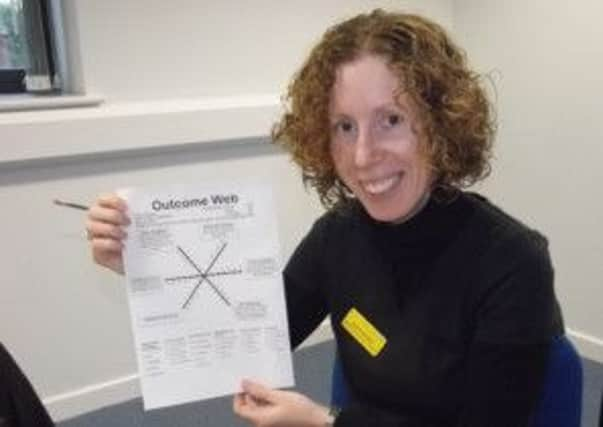New tool to help children with speech and language difficulties


The outcome web is used to help identify goals for the child or young person to work toward and is used at the start and end of their therapy as a measure of their success. Both the child and their parents are involved and are asked to rate on a scale of one to five how concerned they are (one being severe, five being no concerns at all) about six measures:
· Speech and language difficulty
· Parent confidence
· Non-verbal skills
· Satisfaction with service
· Parent involvement
· Child participation.
This is drawn onto the outcome web and gives the family and their therapist areas to focus on. It also is a way of tracking their progress.
Advertisement
Hide AdAdvertisement
Hide AdSarah Howard, children’s therapy manager, devised the tool alongside her team and said: “It can be difficult to measure improvements and successes in therapy. We came up with the idea of the web as it allows patients to visualise their success. It helps us to identify the things that are the most concerning to the client and when they make that progress they can see just how far they’ve come.”
Bobby’s family that say the web measure made a difference to them. Bobby, 13, was referred to the speech and language service because of his anxiety about his stammer and talking in front of his class at school. On the first session an outcome web was completed and this led to joint goal setting. Bobby felt that he was worried that he might stammer in class and that teachers might find out that he stammered. He also felt extremely frustrated that they might think he didn’t know the answers as he often stayed quiet rather than answering. He felt under pressure to talk perfectly.
This led to a discussion about the possible impact of hiding his stammer and long term desirable outcomes which were realistic and might not involve “perfect speech”. With his therapist he set the following goals:
· To become more confident in talking in class (whether he stammered or not)
· To feel less frustrated about his talking
Advertisement
Hide AdAdvertisement
Hide AdAfter working with his therapist for a couple of months Bobby was discharged from the service and another outcome web was completed.
Bobby initially felt that his stammer was mild, but that it moderately affected his participation in talking in school. After therapy this had changed to mild difficulties in joining in within school and no concerns about his stammer. Bobby’s parents felt that they had moved to feeling very confident about understanding and knowing how to best support his talking.
Bobby said: “It’s been really helpful and I don’t worry about talking in class. I’ve even done a presentation and answer questions in class all the time. I think the main thing is to have a go and usually it’s not as bad as you think it’s going to be. I know I have techniques to use so I never get completely stuck on words. I don’t get as mad as I used to because all my friends know I stammer and they don’t care. I don’t really think about my stammer when I am with them.”
Sarah added: “Using the web got to the heart of what was the priority for both Bobby and his parents. This helped to open discussions about what was realistic and what his fears/ motivations were rather than what the therapist thinks is important. It’s good to challenge your own perspectives and remember that therapy should be person centred. Identifying Bobby’s priorities and working with this kept motivation high and Bobby had ownership of his own therapy.”